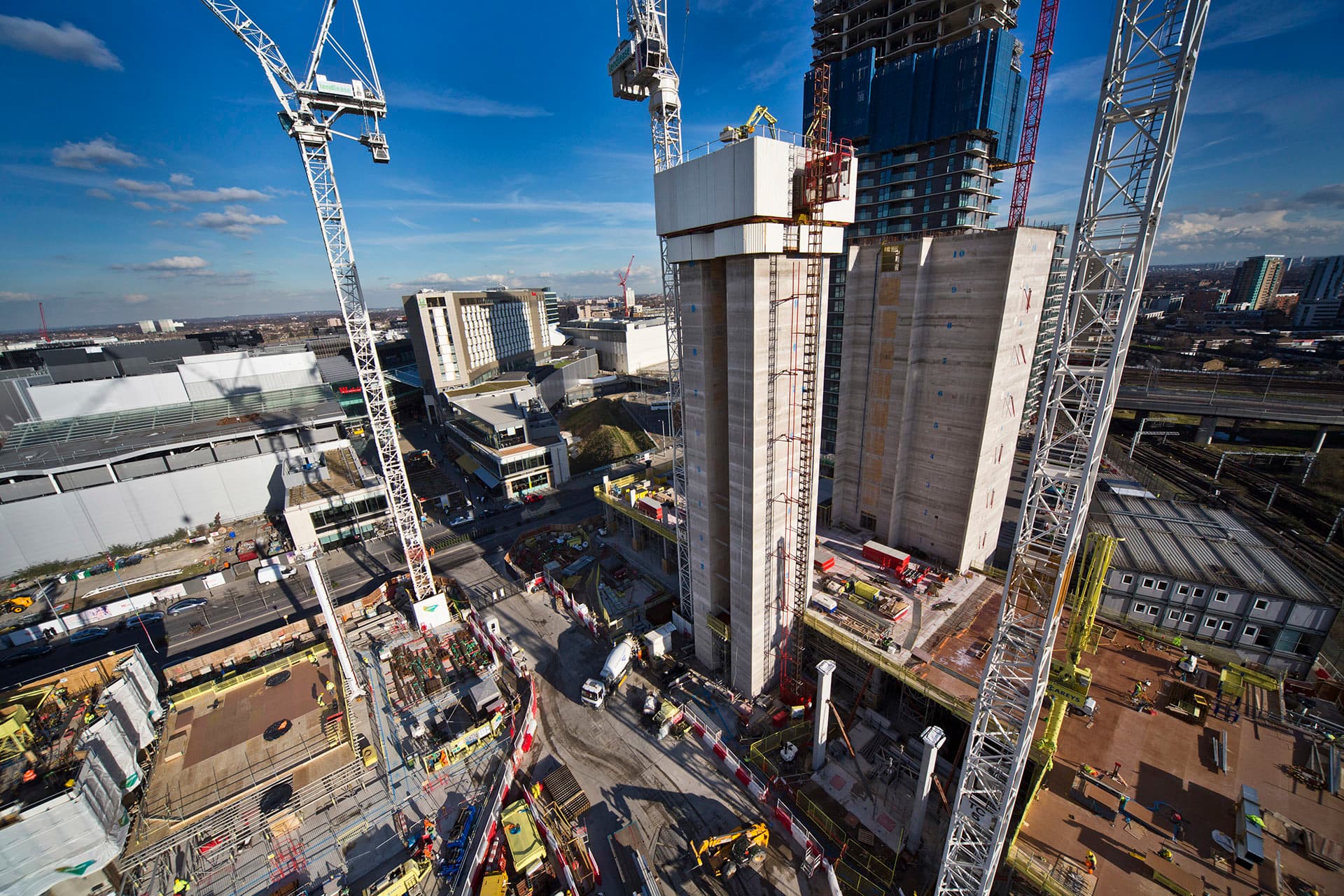
IQL
Careys completed the design and build of two sub and superstructures, infrastructure works and hard landscaping at the International Quarter London (IQL), a business district in Stratford, London. Our team constructed the 12-storey reinforced concrete frame for the S6 office block and the 20-storey reinforced concrete frame for S5, the second office block within the mixed-use development.
Client
Stratford City Business DistrictLocation
StratfordPrincipal Contractor
LendleaseThis flagship project was the first deployment of our own tower cranes, of which we now own several as part of our self-delivery ethos.
The reinforced concrete cores were completed with a slipform methodology; a decision made during pre-construction when we worked alongside the client to carry out a detailed review of the intended programme. Our decision to use a slipform methodology brought a significant overall programme saving of 25 weeks, and a reduced plant and labour cost for our client.
Due to amendments in the floor layouts specified by the client, our team adapted the slipform rig from a single large rig into three individual cores, enabling rotation of our workforce between the cores and staying ahead of the slab pours on lower floors.
Careys in house design team’s 3D modelling and programme analysis played an integral role in overcoming clashes between the post-tension strand positions in the superstructure slabs and the cast-in half channels required for the cladding contractor.
Our team devised a plan that enabled the movement of materials from lower floors to the workface even when the cranes were ‘winded off’, helping to minimise programme impact.
Our team devised a plan that enabled the movement of materials from lower floors to the workface even when the cranes were ‘winded off’, helping to minimise programme impact.
Our team also modified the rig by extending the height of the top deck’s railing to be half of the rebar length, and installed bespoke access ladders on the concrete placing boom to ensure stability and increase safety. To minimise the risk of injury, we opted to use angle grinders and rebar croppers, rather than petrol saws, as they posed less risk to operatives.
Due to the exposed nature of the site, our team identified a likelihood of significant amounts of downtime in crane operations. To overcome this we arranged our perimeter protection screen layout to accommodate a formwork hoist which could safely operate at higher wind speeds than the tower cranes. This enabled us to move materials from lower floors to the workface even when the cranes were ‘winded off’, helping to minimise programme impact. In addition to this, our use of a hydraulic pack to jack the perimeter screens to the next floor level further reduced crane demand to prevent delays to the program.
We'd love to hear from you, so please get in touch